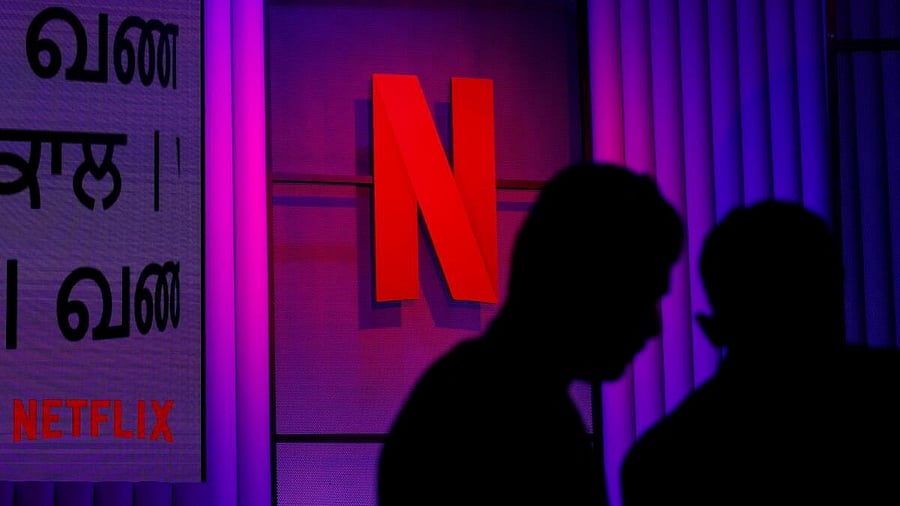
People stand next to the logos of Netflix during an event in Mumbai.
Credit: Reuters File Photo
By Dave Lee
Two things Netflix Inc. said it would never do are now the core pillars of its future growth: advertising and live sports. That lucrative combination has given Netflix its biggest recent successes and helped spur a more than 10 per cent share price jump in after-hours trading on Tuesday after the company reported quarterly results.
The October-December quarter involved the Mike Tyson versus Jake Paul boxing match and two Christmas Day NFL games. These helped send Netflix on its way to a huge subscriber boost — 18.9 million new members. Executives said the other chief driver was the return of the original series Squid Game.
The growth was more than double what Wall Street had expected and a record that blew even Covid-era gains out of the water. The company added 41 million customers in 2024, bringing its total paid subscriber base to more than 300 million.
You would think, then, that Netflix would now be hunting for more and more sports, joining the clamor for big league full-season rights in addition to the marquee events it has been putting out so far.
Not so — or at least not yet. While other streaming companies have been pursuing more regular action, reasoning that it creates more “sticky” subscribers, Netflix is still highly cautious about going all in.
“It doesn’t really change the underlying economics of full-season big-league sports being extremely challenging,” Netflix co-Chief Executive Officer Ted Serandos told investors. “If there was a path where we could make the economics work for both us and the league, we certainly would explore.”
In other words, Netflix believes it can angle for a better deal on account of its unparalleled reach as arguably the world’s first premium global broadcaster, one with an advertising business that is projected to double its revenue this year, Serandos said, though the company did not provide specifics. Overall yearly revenue is expected to rise to $44.5 billion, up 14 per cent from 2024.
The key to making its case might come from an unusual source: wrestling. Less discussed among Netflix’s slate of live programming was the debut of WWE’s Monday Night Raw. Like an oiled-up man in Speedos, it’s a chance for the company to flex its muscles.
In its first week on Netflix, WWE attracted 5 million viewers — “double” what it typically received on linear TV and the show’s biggest audience for five years. Notably, Serandos said the WWE experienced a 25 per cent increase in day-after non-live viewing, driven by international viewers. He added that the UK, Canada, Mexico, Australia and Brazil were the “particularly big” markets.
Netflix thinks these dynamics — the chance to meaningfully build the sport’s reach — applies to other sports and should warrant more favorable terms for full-season rights than what is currently on offer. Netflix has “a big audience, a young audience, a more global audience,” Serandos said. “That has to be reflected in the deal as well.”
Other streaming companies have devised novel ways to enhance the relationship between sports leagues and their biggest stars. In 2022, Apple Inc. devised a revenue sharing arrangement — the precise terms were not disclosed — with football legend Lionel Messi, prompting his move to US Major League Soccer. That deal doesn’t seem to have done all that much for the league’s popularity —not even the great Messi could make MLS worth watching week after week.
Netflix has chosen its events more wisely. Tuesday’s earnings announcement proves the returns have been obvious. Moving forward, the company also has the added security of knowing its traditional business of creating original content is still the main source of subscriber growth and retention. That will give it a sharp negotiating edge as it looks to tempt major sports leagues to hash out some ground-breaking megadeals.